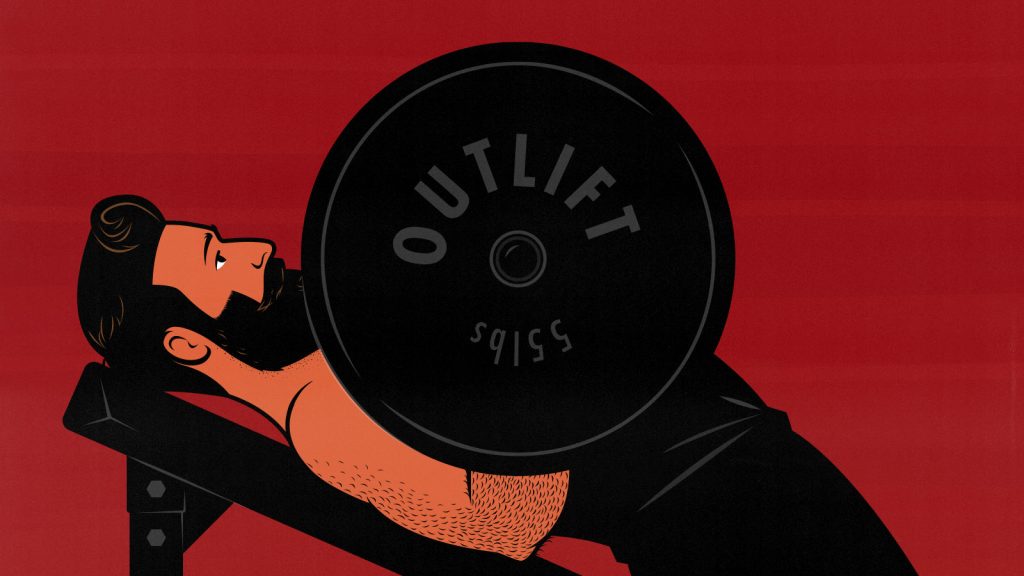
What Muscles Does the Incline Bench Press Work?
The incline bench press works the upper chest, front delts, mid-chest, and triceps. You can emphasize your upper and mid-chest muscles by using a shallower incline (e.g. 30 degrees). You can shift more of the work to your front delts by using a steeper incline (e.g. 45 degrees).
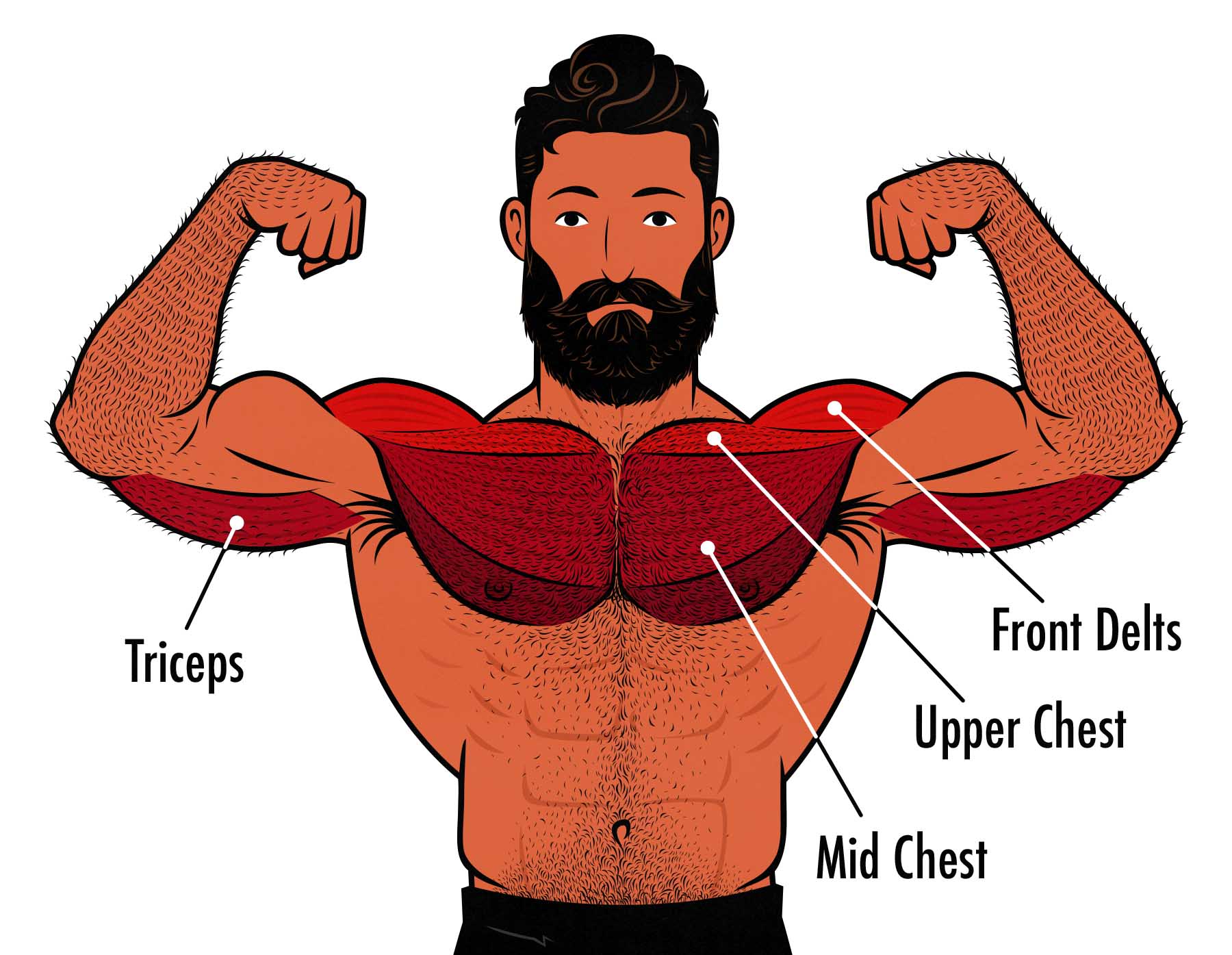
Most people use flat bench presses, dips, or push-ups to work the bigger chest muscles in their mid and lower chests, the incline bench press to work their smaller upper chest muscles, and the overhead press for their shoulders. Those are the three main pressing exercises. They fit well together.
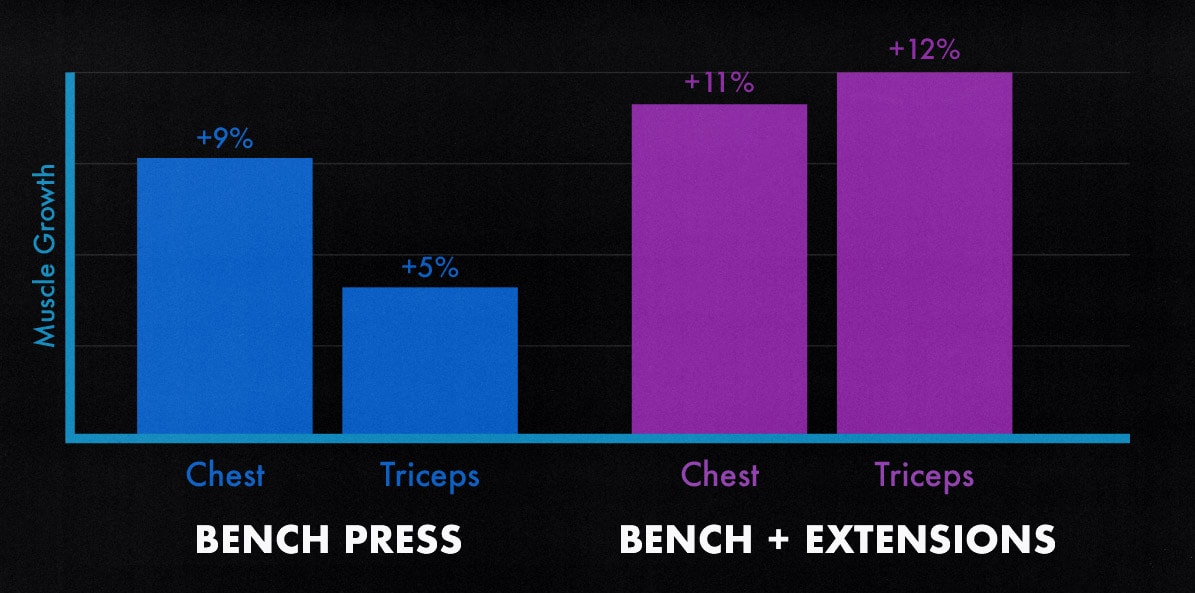
The incline bench press works the two shorter heads of your triceps, but it doesn’t do a very good job of working the long head (study). No pressing exercise does (full explanation). To work the long head, you need an exercise that stays stable at the shoulders, such as a skull crusher or overhead extension.
Muscles Worked by the Flat vs Incline Bench Press
There’s only one study comparing muscle growth from the incline bench press against the flat bench press (study). It found that the incline bench press was twice as good for your upper chest as a flat bench press:
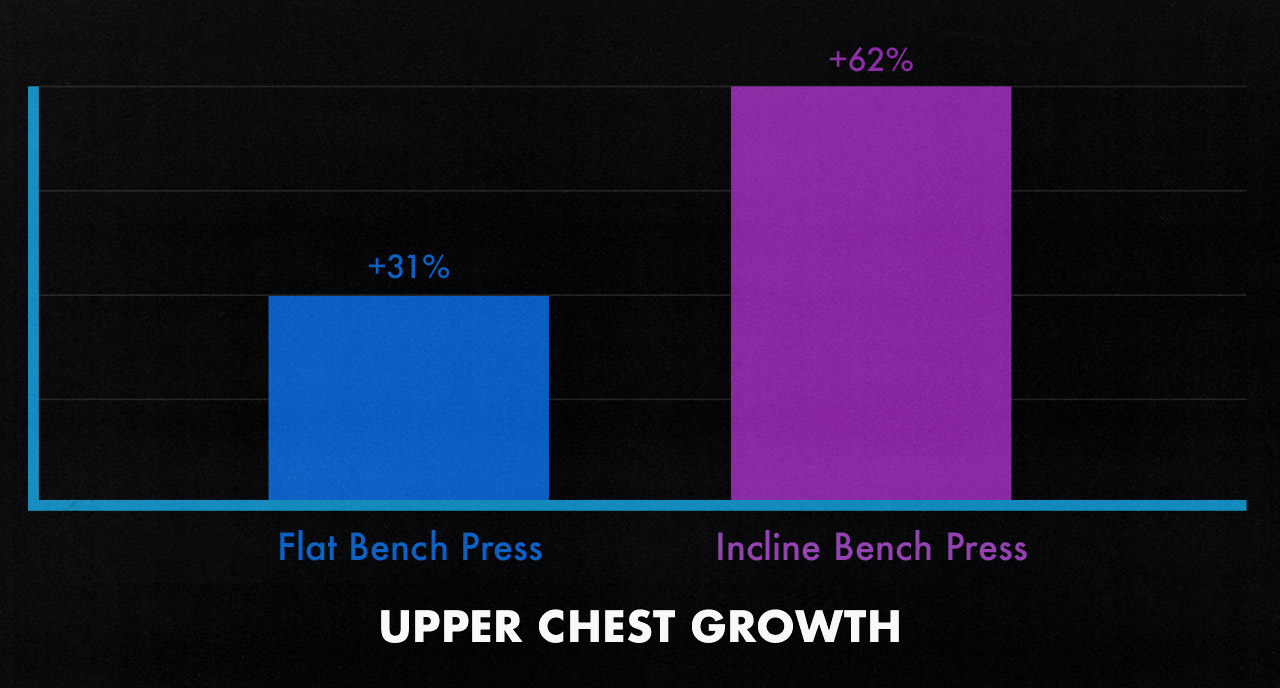
However, it showed a 62% increase in muscle size in only 8 weeks, which doesn’t make sense. That’s 4–10 times more muscle growth than you’d expect from an 8-week study. Greg Nuckols pointed this out when reviewing the study for MASS. He said there was no sign of fraud, but it seems there might have been some measurement errors.
Another study compared muscle activation during the bench press and incline bench press (study), finding higher muscle activation in the upper chest when doing the incline bench press. Higher muscle activation doesn’t always lead to more muscle growth, but the bench press and incline bench press are quite similar. They both have a similar range of motion and strength curve, so a different in muscle activation probably hints at a difference in muscle growth. I think this suggests that the incline bench press is indeed better for the upper chest.
I’m not particularly convinced by either study, but most bodybuilders swear by the incline bench press, most experts recommend it for the upper chest, and it makes biomechanical sense that it would work the upper chest.
How to Do the Incline Bench Press
You can do the incline bench press with dumbbells or a barbell. Most people do the flat bench press with a barbell, so you might want to do your incline bench press with dumbbells. That will also save you from having to set up safety bars.
Use a shallower incline to work your mid and upper chest harder. Use a steeper incline to bring in more of your front delts. I like to use a shallower incline. The front delts get plenty of work already, especially if you have an overhead press in your routine. It’s usually the upper pecs crying out for extra stimulation.
If you only have a flat bench, you might be able to prop it up on a couple of weight plates. That’s what I do. Just make sure it’s sturdy. And remember to set up your safety bars.



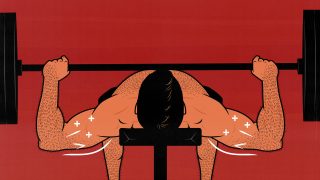
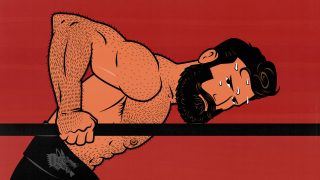

Hi Shane,
When you’re doing the barbell incline press, where do you bring the bar down to? Near collarbones? Near sternum? In between?
Thanks!
If you’re using a lower incline (around 30 degrees) to emphasize your upper chest, it should feel pretty similar to a flat bench press. Nipples are usually about right.
Your body will naturally gravitate towards better leverage as the load gets heavier and you push yourself harder. So, if you find yourself wanting to bring the bar somewhere slightly different, you should probably listen.
You can use a moderate grip width. Not super wide or narrow. That should get the barbell coming down to a nice place.
Hi Shane,
What rep range do you recommend? a bit higher than the Bench Prench? I personal like a shallower angle with the barbell and sets of 12reps. Do you have realistic numbers for the incline bench press in on of surveys or from your clients and experience?
Best Regards
Sebastian